Last Updated on April 4, 2024
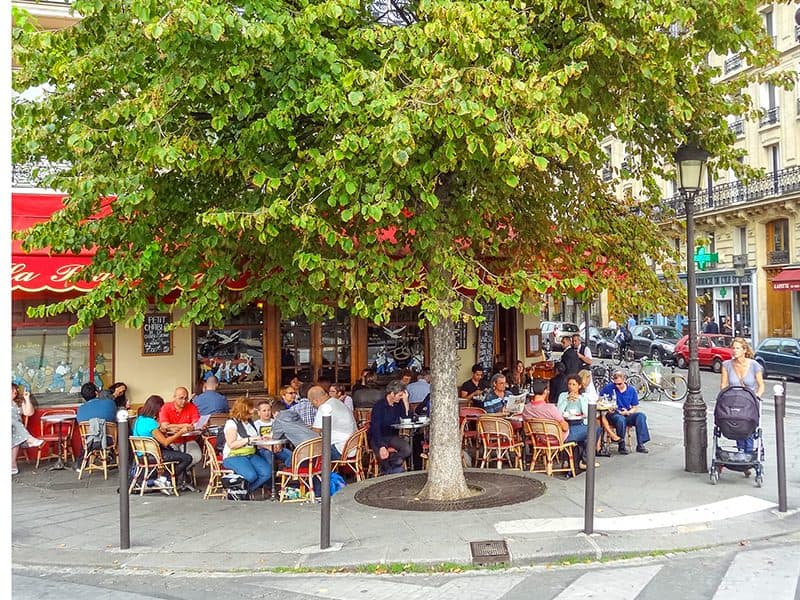
By Jim Ferri
Everyone visiting Paris visits Ile de la Cité, the island in the Seine that’s the city’s birthplace. It’s only natural, of course, for here you’ll find some of the most significant monuments in Paris, including Notre Dame, Sainte-Chapelle, Conciergerie, and Pont Neuf.
Few, however, realize that there’s another island adjacent to it in the Seine. It’s Ile Saint-Louis, tucked away behind Notre Dame and connected to la Cité by a pedestrian bridge. Cross that bridge, and you’re on another island and in another world unknown to most non-Parisians.
The charming island was originally a swampy cow pasture and a place to fish and dry laundry. Development began in the 17th century, and although it initially attracted some of the wealthy, most aristocrats stayed put in the Marais quarter, where they had larger plots of land. The rich that did come occupied properties along the riverside. Artisans and merchants remained in the interior of the small island.
Subsequently, however, many aristocrats, politicians, and businessmen did move to Ile Saint-Louis to escape the noise of central Paris. As a result, it became one of the most affluent neighborhoods in Paris. It remains so today, with its 17th-century buildings being some of the most expensive real estate in the city.
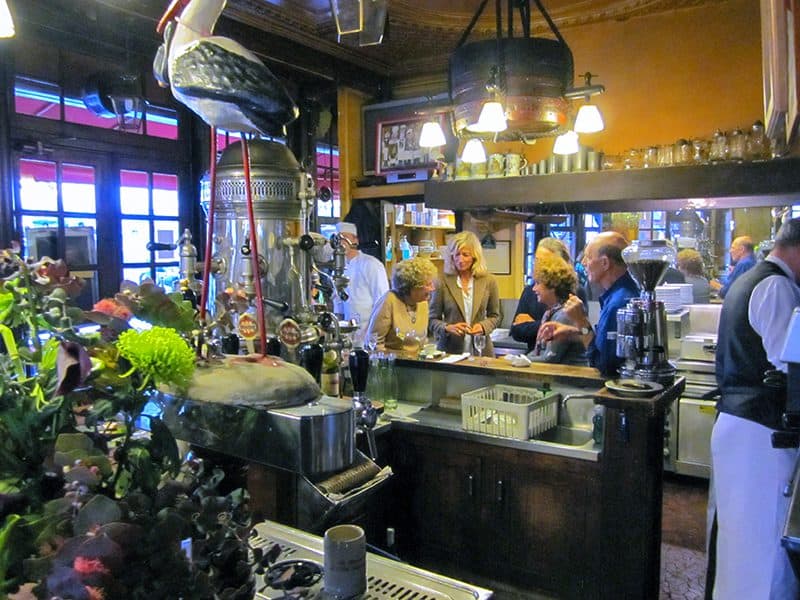
Visiting Ile Saint Louis
It’s very easy to get to Ile Saint-Louis. When you face Notre Dame, walk to the left, then turn right on the first street, Rue du Cloître. It’s just a few minute’s walk up Rue du Cloître to the pedestrian bridge Pont Saint-Louis. (Click here for up-to-date information on the status of the reconstruction of Notre Dame Cathedral following the devastating fire).
Right before you reach the bridge, however, you’ll find a little park dominated by the Fontaine de la Vierge (Fountain of the Virgin) behind the cathedral. Adjacent to it, at the tip of Ile de la Cité, is Square de l’Île-de-France. Both are excellent places to relax for a few minutes before you continue on.
Four bridges connect Ile Saint Louis to the rest of Paris. However, the 220-foot-long Pont Saint-Louis is the only pedestrian bridge. The original bridge, constructed in 1634, was built of wood. What you cross today is the ninth bridge, built in 1970.
If the weather cooperates, especially on weekends, you’ll often find numerous street performers here, including mimes and magicians, jugglers and jazz bands. Perhaps one in the middle of the bridge and others at each end, each usually top-notch Parisian street entertainment.
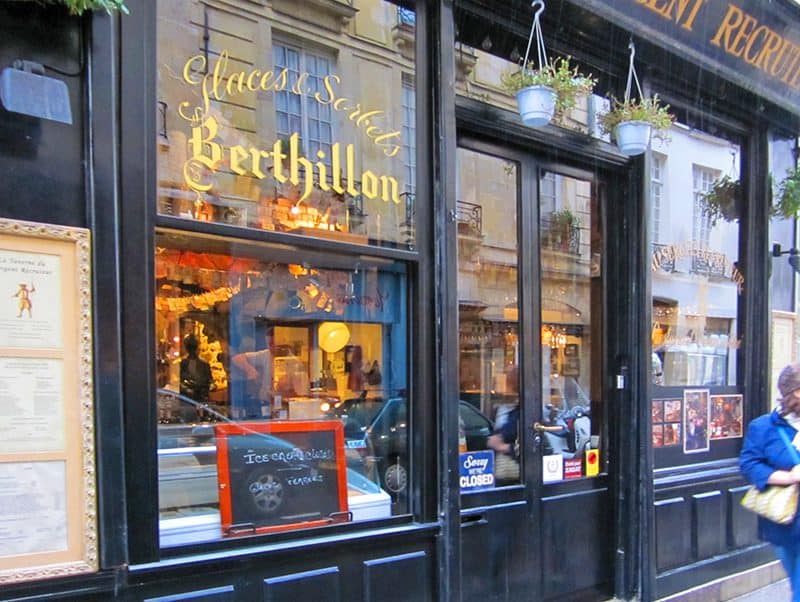
A French Village
In Paris’s 4th arrondissement, Ile Saint-Louis consists of only 27 acres. And as you step off the bridge, you sense the place has more of a 19th-century French Village vibe than a 21st-century French city one.
Visually you get the feeling you’re in Paris in the 1920s and 1930s. Lacking are the modern buildings that pepper the other sides of the Seine.
I got those feelings right off the Pont. Before me, customers were enjoying their drinks and food beneath a sizeable shady tree at a brasserie. Looking up Rue Saint-Louis en Ille, the island’s main thoroughfare and commercial heart, I saw little traffic on the two-lane street (with one lane taken up by parked cars).
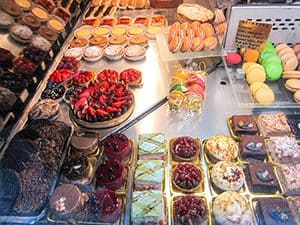
Instead, there was mainly pedestrian traffic in and out of the boutiques and bistros in the old residential buildings that still lined the street.
I walked up the street and joined them, poking into a variety of shops. I found clothing and antique stores, galleries, gourmet food shops, restaurants, patisseries, and cafes scattered all about. Yet, amazingly, I heard few sounds beyond the chatter drifting out from cafes and little shops.
Continuing up Rue Saint-Louis en Ille, I soon came upon Berthillon, the renowned Parisian ice cream shop that often has a queue outside its door. (I was lucky, however, that there were only two patrons ahead of me). It was excellent ice cream, so exceptional that when I finished my cone, I went back and ordered another.
With my second in hand, I continued up the street to Église Saint-Louis-en-l’Île, the only church on Saint-Louis-en-I’lle. Its French Baroque interior architecture was damaged in the French Revolution. But the damage was hidden by quickly hanging tapestries on the walls until repairs could be made. All’s well now, thankfully.
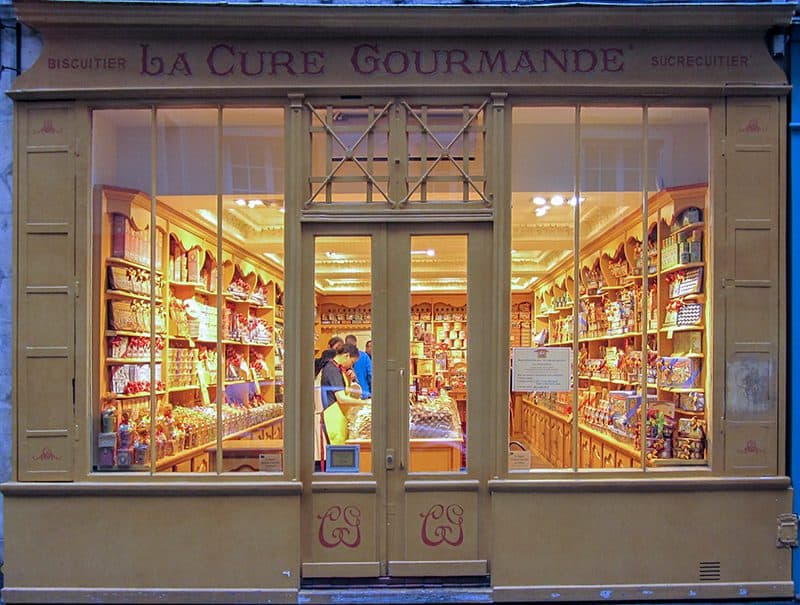
Walk Through History on Ile Saint Louis
The distance around the entire island is only 1.5 miles, and you can walk it in less than an hour. First, as I did, you may want to walk along the interesting Rue Saint-Louis en Ille with its shops and bistros. Or you may want to spend some time on the “river roads” of Ile Saint-Louis that run parallel along the riverbanks.
Instead of heading straight up Rue Saint-Louis, as I did at the bridge, you may want to turn left onto Quai de Bourbon. With its elegant 17th-century townhouses, the Quai was named for the royal family.
Following the street along the shoreline you’ll come to Rue des Deux Ponts, where the street morphs into Quai d’Anjou. You’ll soon pass the Hotel de Lauzun, a former 17th-century private mansion. It’s not a “hotel” in the English-speaking sense but a beautiful building that’s home to the Paris Institute for Advanced Study. It’s most famous for having been the place where many French writers and artists – including Delacroix, Dumas, Balzac and others – came to experiment with drugs in the 19th century.
Right around the corner, however, you’ll find the Hotel Lambert on the eastern end of Rue Saint-Louis en Ille. Again, it’s not a hotel, so to speak, and is not open to visitors. But its interior is so incredible it’s a UNESCO World Heritage-listed building. It’s currently owned by a French telecom billionaire and art collector, and is not open to the public.
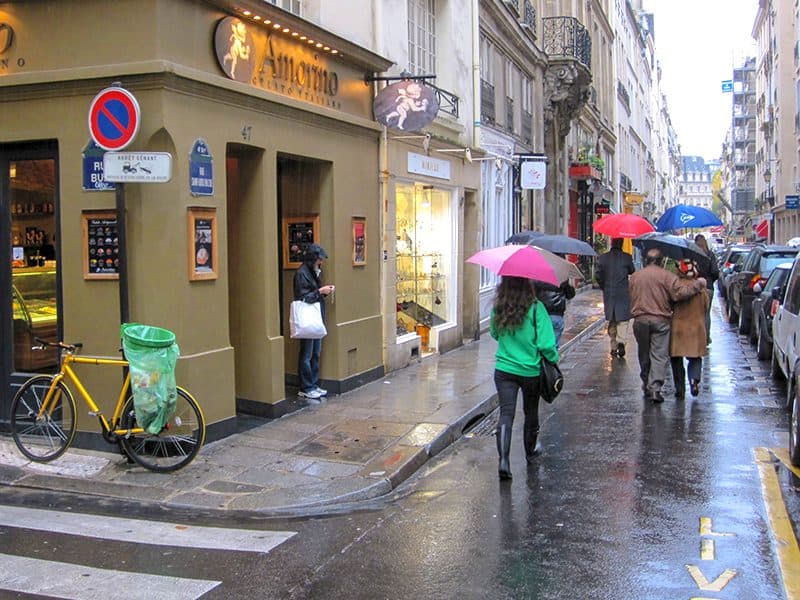
The Popular Southeastern Side
Continue along the river, and you’ll soon be at the easternmost point of the island, the popular Square Barye. Today it’s a park resembling a ship’s bow jutting out into the river although, initially, a convent occupied the space.
Then continue along Quai de Bethune on the south side of the island, once home to many of the rich and famous. As you walk along you you’ll be passing the former residences of such notables as Marie Curie, Helena Rubenstein and French President Georges Pompidou.
You’ll find the former home of Marie Curie on the corner when you reach Rue des Deux Ponts, with the Pont de la Tournelle on your left. Turn right here, and after 100 yards or so, you’ll be back on Rue Saint-Louis en Ille near Berthillon. Now you can spend your time shopping or find a bistro for a drink or a bite to eat. You’ll only be minutes from Notre Dame if you don’t stop to enjoy the street performances on Pont Saint-Louis.
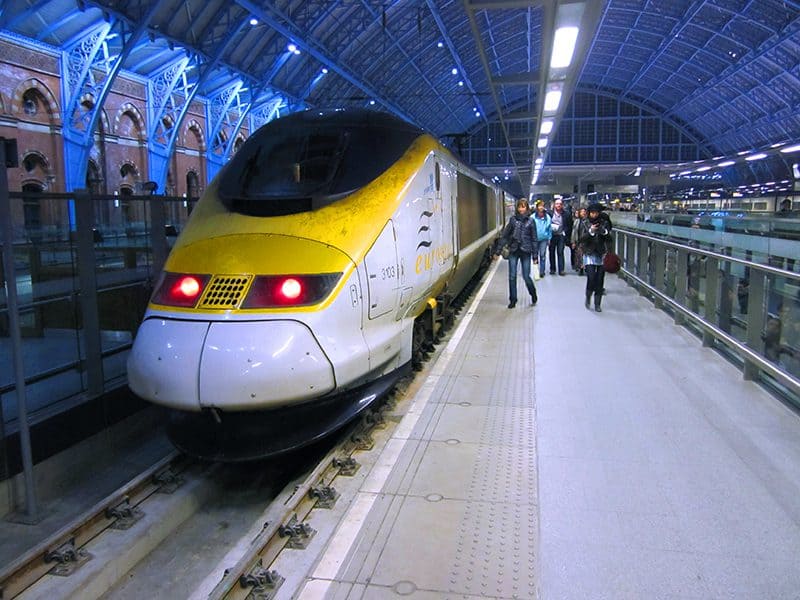
If You’re In London
Ile Saint-Louis and the surrounding area is a great day trip from London. In fact, the planning for my Ile Saint-Louis trip took place less than 24 hours earlier in London.
After being in London for about a week, I decided to take the Chunnel train to Paris the following morning. The trip was only about two hours in each direction, and since I hadn’t returned to Paris in a couple of years, I felt lured across the Channel. In addition, I knew this would also give me time to visit Ile Saint-Louis, which, for one reason or another, I had never found my way to over the years.
I took the 6:53am train from St. Pancras Station the following morning, arriving in Paris’s Gare du Nord a little after 10am. Since I had also booked the last train back that evening, at 9:13pm, I had about 11 hours to visit Ile Saint Louis and flit about Paris.
If you’re in London, you’ll find it’s time well spent.

About 40 or 50 years ago, I was researching a guidebook on festivals and events in Europe and heard about a rollicking festival held by French communists annually on the Ile Saint-Louis. So I attended it. And a jolly good time was had by all, including me. I had not long ago returned from fighting in a war against communism in SEA, so it was a bit surreal. But the food, drink, music, and dancing was great. While I never appreciated their politics, they do know how to throw a party!
Hi Stan,
Not only do they know how to throw a party, you know how to write about one.
I hope you’re well.
Jim